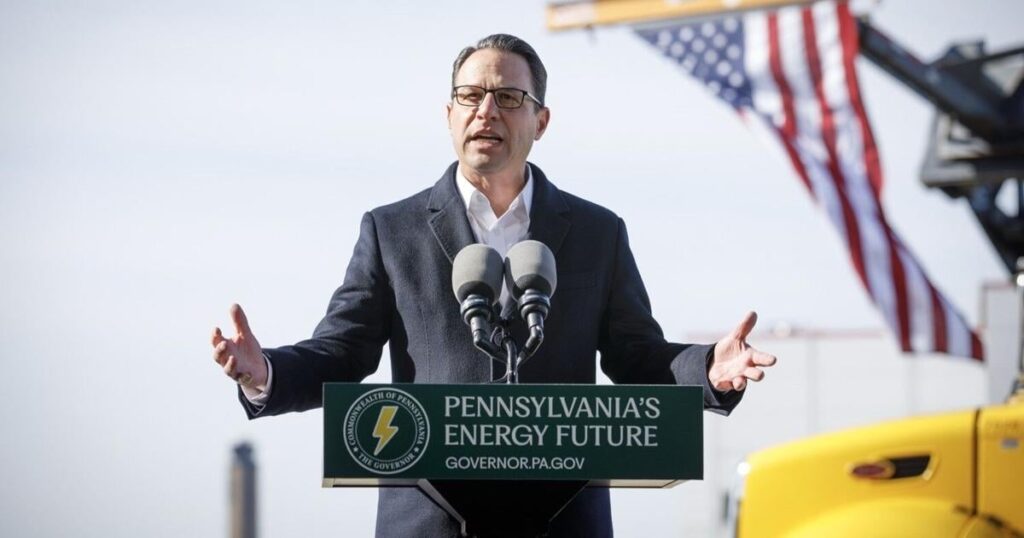(The Center Square) – Gov. Josh Shapiro recently unveiled his asks for the coming state budget, and like many of his predecessors, some of his latest proposals are ones he couldn’t get approved in years prior.
One such request is the Pennsylvania Climate Emissions Reduction Act, called PACER for short. His administration describes it as a carbon cap-and-trade program that is, ultimately, a tax on the carbon dioxide emissions of energy sources.
PACER is Shapiro’s answer to the controversial Regional Greenhouse Gas Initiative, also known as RGGI, a similar carbon tax program former Gov. Tom Wolf attempted to force upon the commonwealth in 2019.
PACER and RGGI cap the amount of emissions power generators create each year through an allowance system that producers trade via auction. Regarding RGGI, when Wolf issued his executive action, his plan assumed an auction price of approximately $3.57 per allowance; the most recent auction price in December was $20.05.
The Pennsylvania Independent Fiscal Office – which estimated a $13.50 auction price in 2022 would represent $781 million in additional costs for Pennsylvania power generators – concluded the additional costs would be passed on to residential, business and industry consumers as well as negatively impact the generation of electricity in the state.
Commonwealth Court found Wolf’s executive order unconstitutional, but that decision was appealed to the state Supreme Court and is awaiting action. Shapiro has continued to defend RGGI in court, but last year, he unveiled PACER, suggesting the policy focused on “protecting and creating energy jobs, taking real action to address climate change pollution, and ensuring reliable, affordable power for consumers in the long term.”
Shapiro, who as a gubernatorial candidate questioned RGGI, has indicated he would put an end to Pennsylvania’s participation in RGGI if the General Assembly approves PACER.
PACER promises the same things that RGGI proponents promise, according to the Shapiro administration, but the governor notes his plan would be Pennsylvania-specific, ensuring all benefits – including revenues – generated by the program stay in the commonwealth, including 70% of generated revenue being used to lower consumer electricity bills, with remaining revenues directed at promoting clean energy projects.
The governor also suggested PACER was the result of input supplied by his RGGI Working Group, which in 2023 was hand-picked by Shapiro and given the task of evaluating the merits of Pennsylvania’s membership in RGGI and any proposed RGGI alternatives.
The workgroup concluded Pennsylvania should not be part of RGGI, but couldn’t reach a consensus on much else, other than expressing some openness to an undefined cap-and-trade program, with emphasis on including Pennsylvania and all of its neighboring states, possibly all the states served by the PJM Interconnection. PJM is a regional transmission organization that coordinates the movement of wholesale electricity in all or part of 13 states – Delaware, Illinois, Indiana, Kentucky, Maryland, Michigan, New Jersey, North Carolina, Ohio, Pennsylvania, Tennessee, Virginia and West Virginia – and the District of Columbia.
Critics of cap-and-trade programs point out such programs export energy generation from participating states to neighboring non-participating states, not only relocating a substantial amount of energy jobs and business, which significantly impacts the economies of those states losing their energy producers and workers, but also exporting carbon emissions emissions to non-participating states, not reducing them.
For Pennsylvania, which is one of the largest energy producers in the nation, a June 2021 analysis by David T. Stevenson, director of the Center for Energy and Environment at the Delaware-based Caesar Rodney Institute, found a carbon tax would cost the commonwealth as much as $2 billion a year in electricity sales, 22,000 jobs and $7.7 billion in combined economic productivity. These impacts were based on auction prices far lower than the current $20.05.
Senate Republicans last year, when Shapiro proposed PACER, argued the impacts of a Pennsylvania-specific cap-and-trade program would be no different than RGGI’s impacts.
“The key challenge is a cap-and-tax initiative is punitive and we shouldn’t be having this conversation with a punitive mindset,” said Senate Majority Leader Joe Pittman, R-Indiana.
Sen. Gene Yaw, R-Williamsport, the majority chair of the Senate Environmental Resources and Energy Committee, has been clear about his opposition to any type of cap-and-trade program.
“Gov. Shapiro appears to be adopting the same misguided policies of his predecessor by imposing a RGGI-like, job-killing carbon tax on electric generation and other mandates,” said Yaw. “The governor left out the real crisis we are facing in the next 10 years: the generation of baseload electricity.”
Baseload power plants run continuously to meet demand, day or night, regardless of the weather.
His assertions backed up by reports by PJM in recent years, Yaw said the state and the larger PJM are falling behind in replacing baseload electricity generation capacity that has been lost due to policy changes that have forced the closure of coal power plants, in addition to other aging energy-producing facilities going offline.
“Over the next few years, we are expected to lose 40,000 megawatts (MWs) of reliable, baseload power from the PJM grid, of which about 10,000 MWs comes from Pennsylvania. The bulk of the loss is due to policy reforms, such as those recommended by the governor,” Yaw said, adding that these policies send “a terrible message to potential investors considering Pennsylvania for investments in reliable, baseload generation.”
Yaw explained that a natural gas electric generation facility takes three to five years to build, while a nuclear facility takes 15 to 20 years. To meet the projected electricity needs three years from now, Yaw said, “We should have 10 combined cycle generation facilities under construction right now. We don’t, and we are running out of time.”
PACER, as well as Shapiro’s other proposal to require utility companies to purchase more electricity generated by renewable sources – most of which are still unreliable as on-demand energy sources because their generation fluctuates depending on time of day and weather conditions – are doing nothing to address looming energy grid reliability concerns, argued Yaw.


